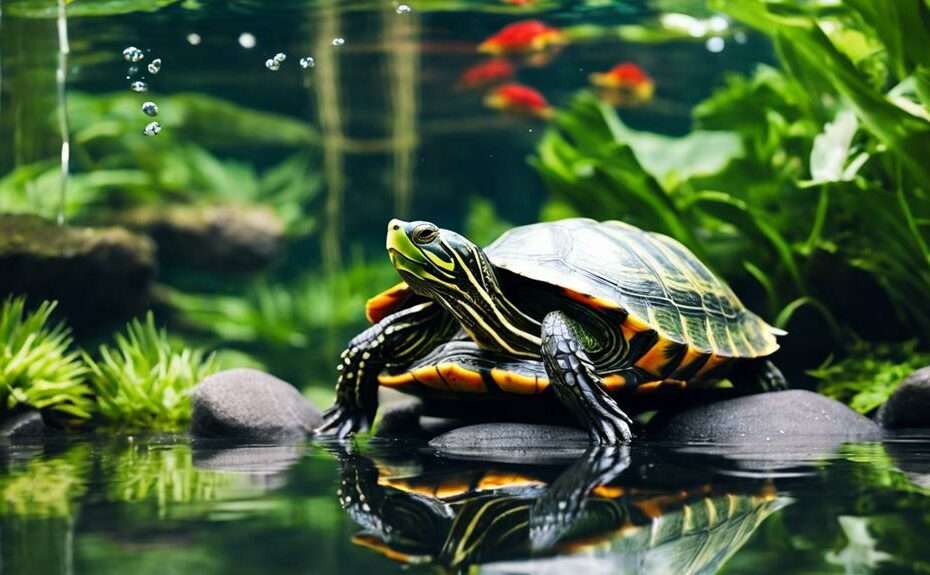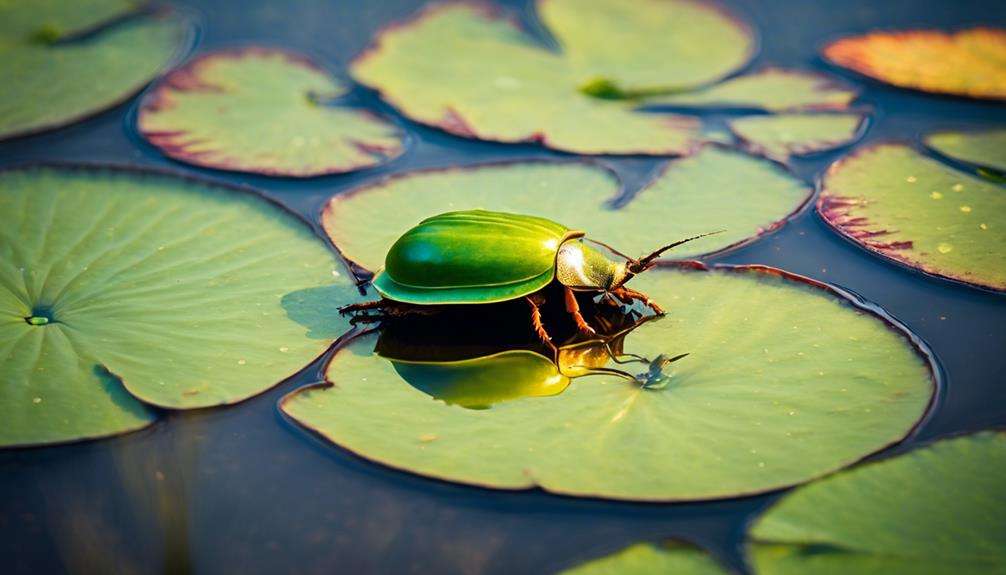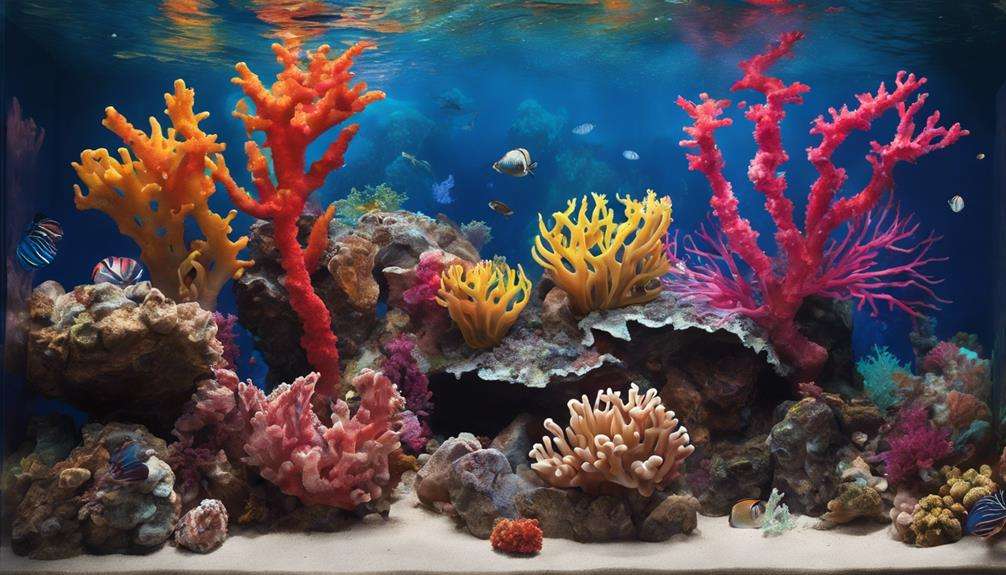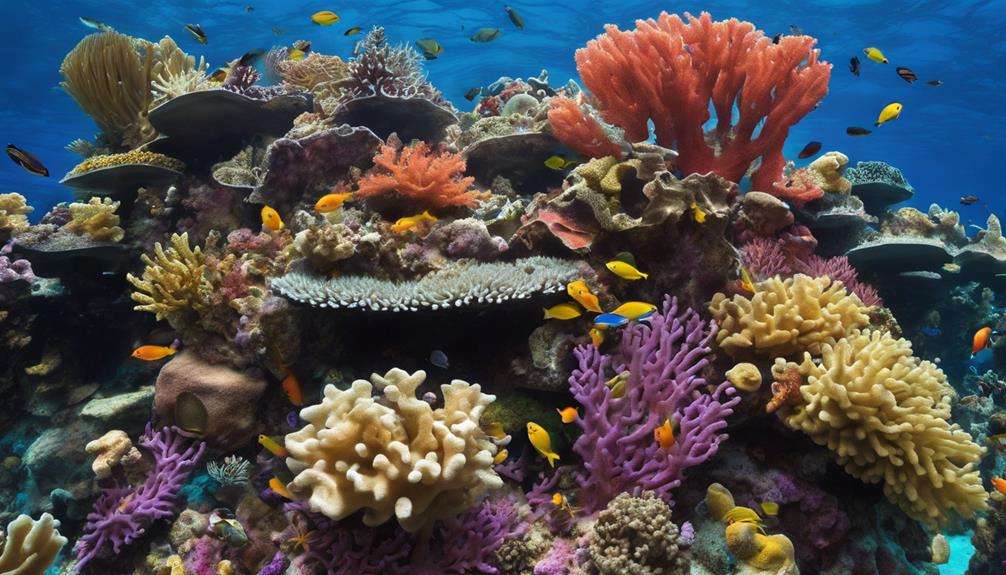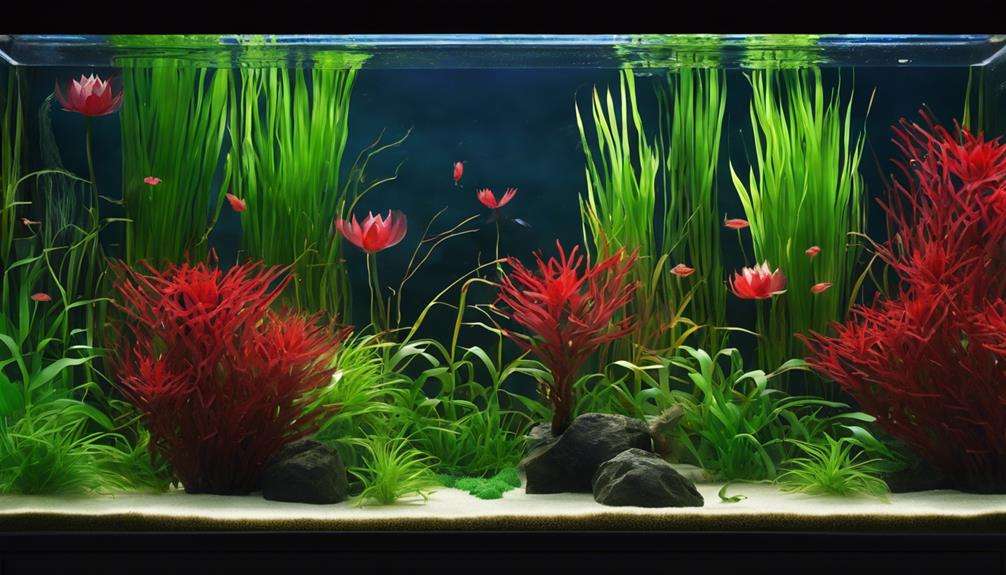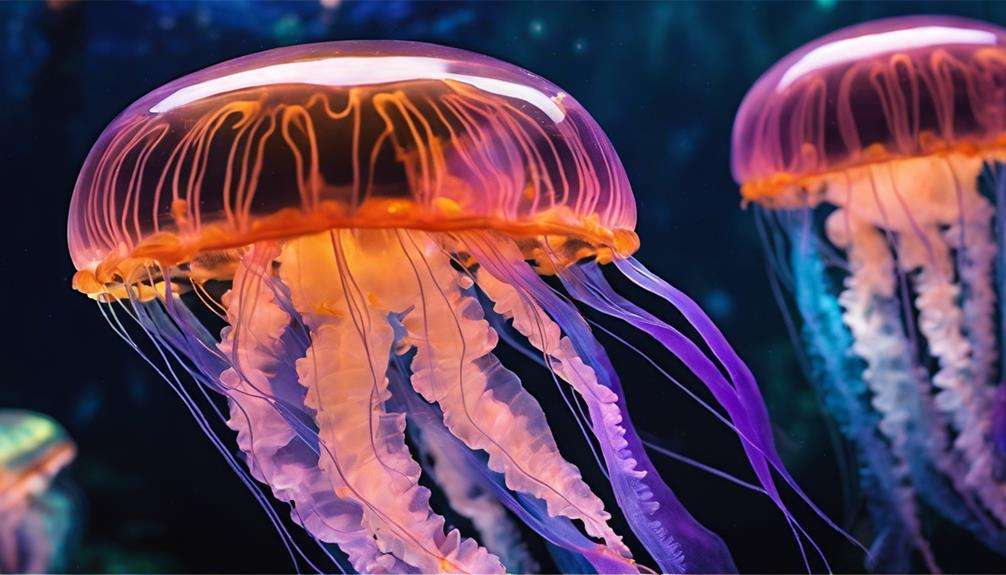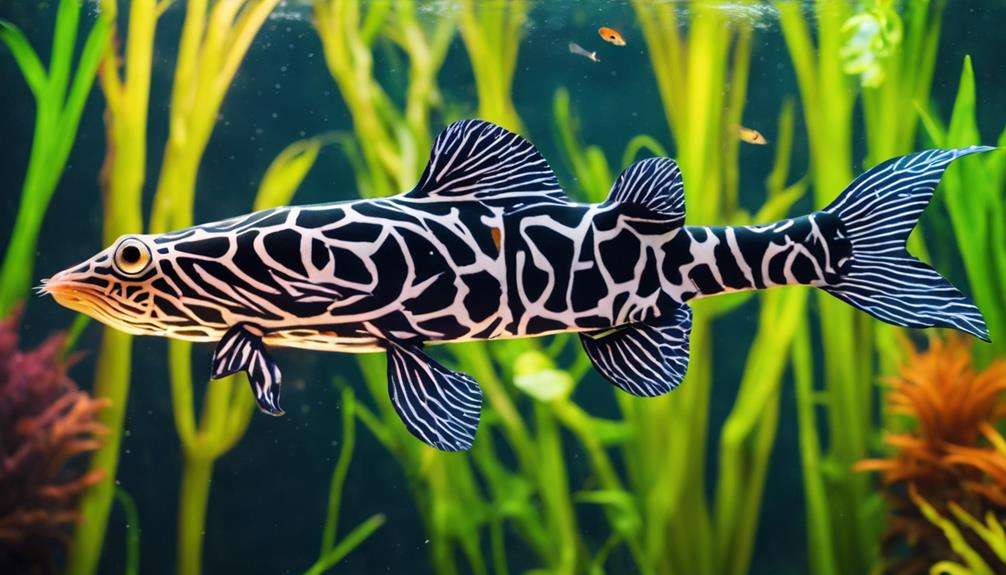Are you looking to add a touch of intrigue to your aquatic setup with some unique turtle species?
Plunge into the world of aquatic habitats with these five fascinating turtle species that offer a blend of charm and mystery. Each one possesses distinct characteristics that make them stand out in their underwater domains, making them ideal choices for those seeking a spellbinding addition to their tank.
Stay tuned to uncover the allure of these aquatic companions and discover which one might just be the perfect fit for your underwater oasis.
Key Takeaways
- Red-eared sliders and painted turtles need large tanks and UVB lighting for health.
- African sideneck and map turtles require spacious tanks with water access and UVB lighting.
- Musk turtles have specific habitat needs like clean water and UVB lighting.
- Different turtle species exhibit unique behaviors and preferences crucial for their care.
Red-Eared Sliders
Red-Eared Sliders, renowned for the distinctive red markings adorning their heads, are a sought-after aquatic turtle species among enthusiasts due to their striking appearance and size. As a sizable pet turtle, Red-Eared Sliders require a spacious 100-gallon tank to accommodate their growth and provide ample swimming space.
It's important to equip their habitat with UVB lamps to aid in the synthesis of Vitamin D, essential for maintaining the health of their shells.
Being omnivores, Red-Eared Sliders have a diverse diet that includes aquatic turtle pellets, insects, and leafy greens. Ensuring a well-rounded diet is essential for their overall health and longevity. These turtles exhibit fascinating behaviors when foraging for food, displaying their natural instincts in captivity.
African Sideneck Turtles
Characterized by their distinctive long necks and flat shells, African Sideneck Turtles are alluring aquatic inhabitants that demand attention in any aquatic setup. These turtles can reach sizes of 6-10 inches as adults, making a 55-gallon tank or larger necessary to accommodate their growth adequately. To guarantee their well-being, African Sideneck Turtles require a habitat with access to water for swimming, a heat lamp for thermoregulation, a filtration system to maintain water quality, and a UVB lamp to aid in calcium absorption and shell health.
While African Sideneck Turtles are considered lower maintenance compared to some turtle species, proper habitat upkeep is pivotal to their health. Regularly cleaning and monitoring water quality, providing a balanced diet, and making sure the temperature and lighting requirements are met are essential tasks for their care. By creating a suitable environment with the necessary elements, you can enjoy the fascinating presence of African Sideneck Turtles in your aquatic setup for years to come.
Painted Turtles
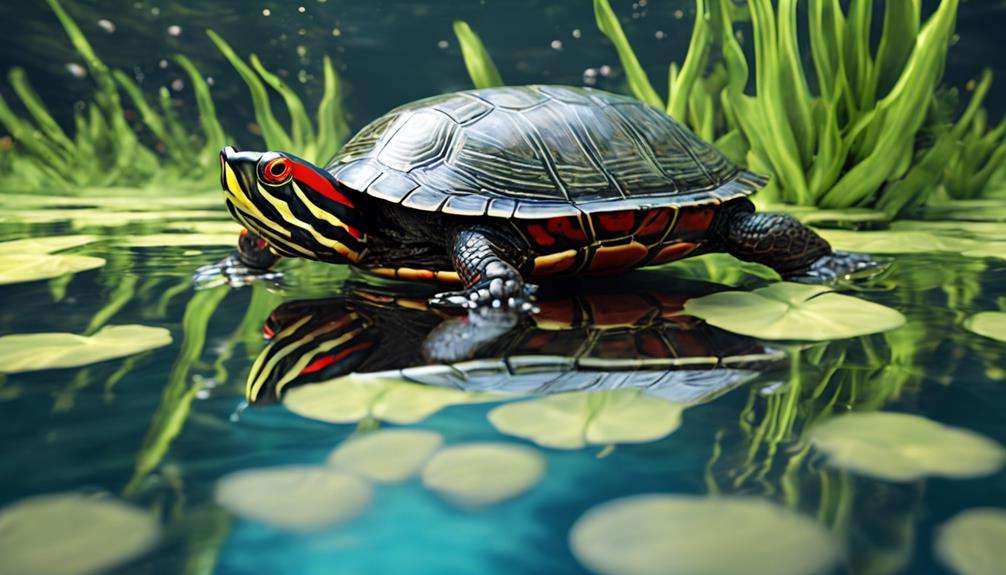
Painted turtles, with their vibrant shell markings that vary in color and pattern, are medium-sized aquatic turtle species that captivate with their appearance. These omnivores can reach sizes of up to 12 inches and require a diet consisting of aquatic turtle pellets and leafy greens to thrive. Providing a 100-gallon tank or an indoor kiddie pool is essential to accommodate their need for swimming and basking.
Additionally, proper UVB lighting is essential for maintaining the health of their shells. When setting up an aquatic habitat for Painted turtles, make sure the tank is spacious enough for them to move around comfortably and that there are ample basking spots for them to regulate their body temperature effectively. Observing these fascinating creatures swimming gracefully and basking under the warmth of UVB light in a well-equipped environment is a rewarding experience for any turtle enthusiast.
Musk Turtles
With their smaller size and distinctive yellow stripes on their heads and necks, Musk turtles present a unique and enchanting addition to aquatic setups. These turtles, also known as eastern musk turtles or stinkpot turtles, typically grow to about 4-5 inches in length, making them a manageable size for many enthusiasts. As omnivores, their diet consists of a varied menu including insects, crustaceans, and vegetables.
To make certain the well-being of Musk turtles in captivity, it's essential to maintain clean water conditions, provide a basking area for them to dry off and regulate their body temperature, and offer a UVB lamp to mimic natural sunlight exposure. These elements are crucial for their overall health and longevity.
When setting up an aquatic environment for Musk turtles, attention to detail in water quality, basking provisions, and light sources plays a significant role in creating a suitable habitat for these intriguing creatures.
Map Turtles
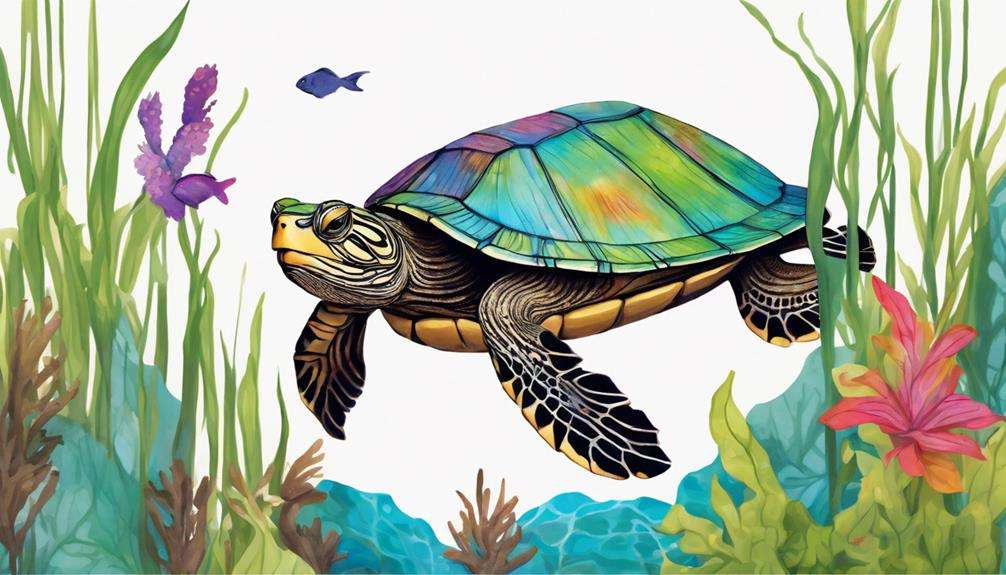
Map turtles, a diverse group of North American turtles, display distinctive shell patterns resembling maps. These aquatic species can reach sizes of up to 10 inches, with females typically being larger than males.
To accommodate their needs, a large tank is essential, with females requiring a 125-gallon tank and males a 100-gallon one. Map turtles thrive in habitats with deep water, providing them with stress relief and a sense of security.
When setting up their tank, incorporating rocky basking areas is important, along with a reliable water filtration system to maintain water quality. Meeting their specific care needs is essential, which includes the provision of UVB lighting and heat lamps to support their overall health and well-being.
Frequently Asked Questions
What Is the Best Turtle Breed for an Aquarium?
For an aquarium, the best turtle breed depends on factors like tank size, water parameters, and personal preferences. Consider species like Red-Eared Sliders or Painted Turtles for their vibrant colors and active behavior.
What Is the Coolest Turtle?
You might wonder what makes the Spiny Softshell turtle the coolest. Its flat, leathery shell, long snorkel-like nose, and excellent swimming skills are just the beginning. With a carnivorous diet and up to 50 years in captivity, these turtles are truly fascinating.
What Is the Best Setup for a Turtle?
In setting up your turtle habitat, make sure the tank is spacious, with a basking area, aquatic plants, and tank decorations for enrichment. Maintain water quality with filtration, UV lighting, and proper temperatures. Feed a balanced diet, clean regularly for a healthy environment.
What Is the Friendliest Turtle Species?
When seeking a friendly turtle species, the Eastern Box Turtle stands out. Enjoying social interactions, they may even relish being petted. Their playful personality, easy care needs, and bonding opportunities make them ideal for those seeking a companion.
Conclusion
As you explore the intricate patterns on the Mississippi Map Turtle's shell, you may notice a striking resemblance to the intricate lines of a treasure map. Just like a hidden gem waiting to be discovered, each of these fascinating turtle species brings a unique charm to aquatic setups.
From the vibrant Red-Eared Slider to the shy Painted Turtle, each one offers a mesmerizing glimpse into the diverse world of aquatic turtles. Immerse yourself in the wonder of these aquatic companions and let their beauty inspire your own underwater oasis.
